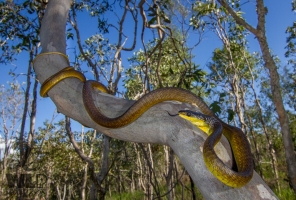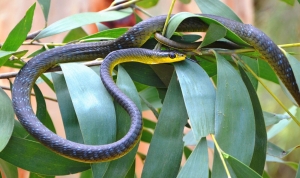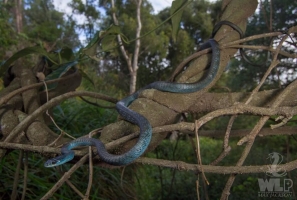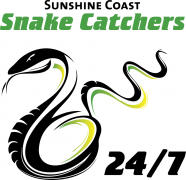COMMON TREE SNAKE
Significance to Humans:
Inoffensive and bites infrequently. Emits a strong odor from the cloaca if handled firmly.
General description:
Sleek slender body with long, very thin tail. Distinctive ridge extends along outer edges of belly making shed skins easily identifiable. Wide colour ranges from green, olive, brown & black to rare blue-grey on upper body. Belly yellow or creamy, with bright yellow present on throat. Some specimens with blue or grey belly but generally maintain the yellow coloration above the ventral ridges. Skin between the scales when spread show as a light sky blue especially after consuming a meal larger than its body diameter or when defensive. Eye appears large comparative to head. Midbody scales at 11 -13 rows (rarely 15).
Average Length:
1.2 metres but a specimen of 1.96 metres has been recorded.
Habitat in SE Qld:
Wide range of habitats from the periphery of rainforest, wet sclerophyll forests, dry woodland, farmland, and suburban backyards and gardens throughout the region.
General habits:
Diurnal (Active by day)
Diet:
Predominantly frogs and skinks.
Local distribution:
Common & widespread throughout the Sunshine Coast.
Around the home:
Probably the most common species to enter homes. Generally above ground enviroments such as heavy foliage of trees and shrubs, exposed beams of verandahs and pergolas, sheds and garages. Fast-moving and hard to see in heavy cover. Have exploited the abundant supply of Asian house Geckoes, high densities of skinks and frogs in continually watered localities associated with suburban environments, thus accounting for there frequency around homes.
NON-VENOMOUS


Click on Image to Enlarge








